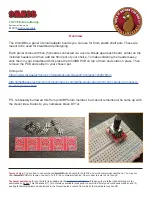
Preparing for Use
R&S
®
FSVA3000/R&S
®
FSV3000
32
Getting Started 1330.8073.02 ─ 04
4.15
Protecting Data Using the Secure User Mode
During normal operation, the R&S
FSV/A uses a solid-state drive to store its oper-
ating system, instrument firmware, instrument self-alignment data, and any user
data created during operation.
Optionally, a removable solid-state drive is available (R&S
FSV3-B20), which can
be removed from the R&S
FSV/A and locked in a secure place to protect any
classified data it may contain.
Redirecting storage to volatile memory
Alternatively, to avoid storing any sensitive data on the R&S
FSV/A permanently,
the
secure user mode
was introduced (option R&S
FSV3-K33). In secure user
mode the instrument’s solid-state drive is write-protected so that no information
can be written to memory permanently. Data that the R&S
FSV/A normally stores
on the solid-state drive is redirected to volatile memory instead, which remains
available only until the instrument is switched off. This data includes:
●
Windows operating system files
●
Firmware shutdown files containing information on last instrument state
●
Self-alignment data
●
General instrument settings such as the IP address
●
Measurement settings
●
User data created during operation
●
Any data created by other applications installed on the R&S
FSV/A, for exam-
ple text editors (Notepad), the Clipboard, drawing tools, etc.
Users can access data that is stored in volatile memory just as in normal opera-
tion. However, when the instrument’s power is switched off, all data in this mem-
ory is cleared. Thus, in secure user mode, the instrument always starts in a
defined, fixed state when switched on.
To store data such as measurement results permanently, it must be stored to an
external storage device, such as a memory stick.
Limited storage space
The volatile memory used to store data in secure user mode is restricted to
256
MB. Thus, a "Memory full" error can occur although the hard disk indi-
cates that storage space is still available.
Protecting Data Using the Secure User Mode
















































